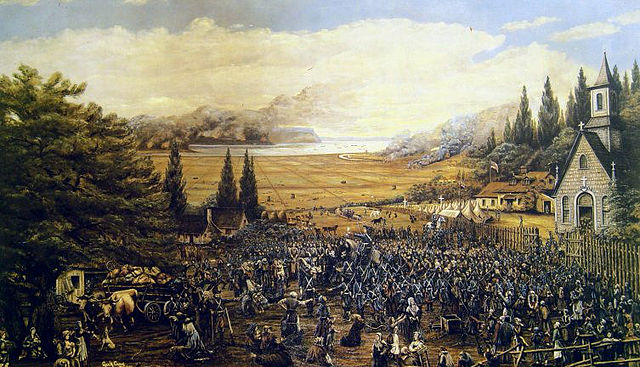The Wabanaki Confederacy is a North American First Nations and Native American confederation of five principal Eastern Algonquian nations: the Abenaki of St. Francis, Mi'kmaq, Maleceet, Passamaquoddy (Peskotomahkati) and Penobscot.
1627 illustration by Mattheüs Merian of local people hunting using fire, canoes and bows and harvesting corn on Pesamkuk (Mount Desert Island).
This Spanish chart of the Saint Lawrence River showing Wabanaki lands at the bottom, from ca. 1541, contains a legend in front of the "isla de Orliens" that says: "Here many French died of hunger"; possibly alluding to Cartier's second settlement in 1535–1536
Samuel de Champlain fighting on July 30, 1609, alongside the Western Abenaki in a successful battle against the Iroquois at Lake Champlain
Deportation of the Acadians, Grand-Pré.
First Nations is a term used to identify Indigenous peoples in Canada who are neither Inuit nor Métis. Traditionally, First Nations in Canada were peoples who lived south of the tree line, and mainly south of the Arctic Circle. There are 634 recognized First Nations governments or bands across Canada. Roughly half are located in the provinces of Ontario and British Columbia.
Squamish woman
Details of Ojibwe Wigwam at Grand Portage by Eastman Johnson
Chief Anotklosh of the Taku Tribe.
Conference between the French and First Nations leaders by Émile Louis Vernier.








